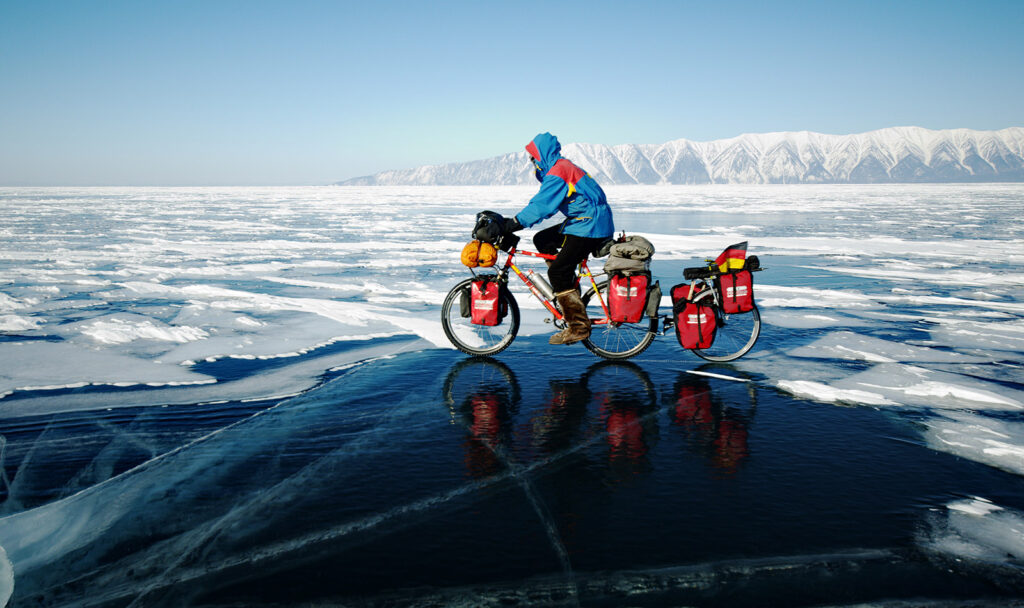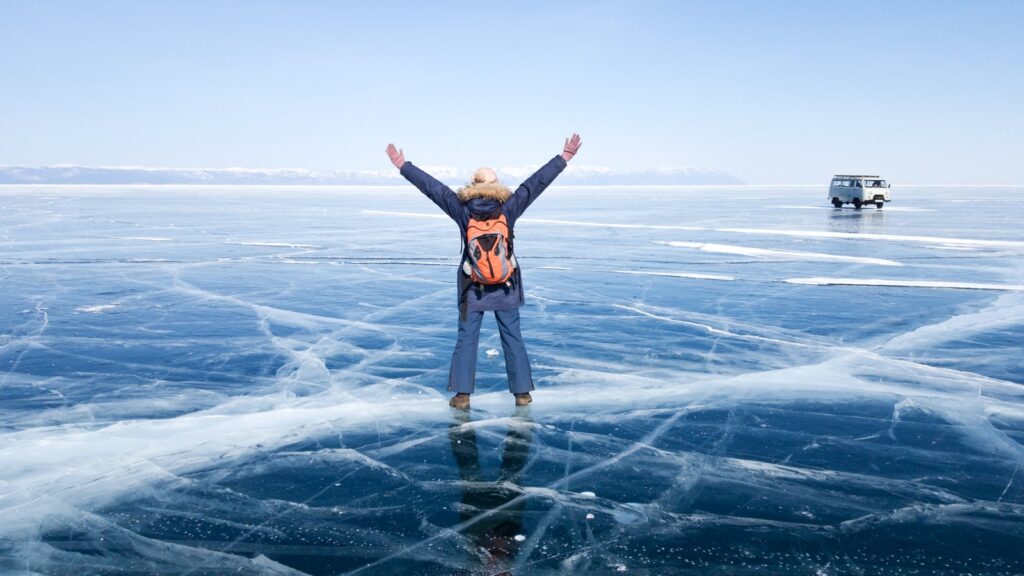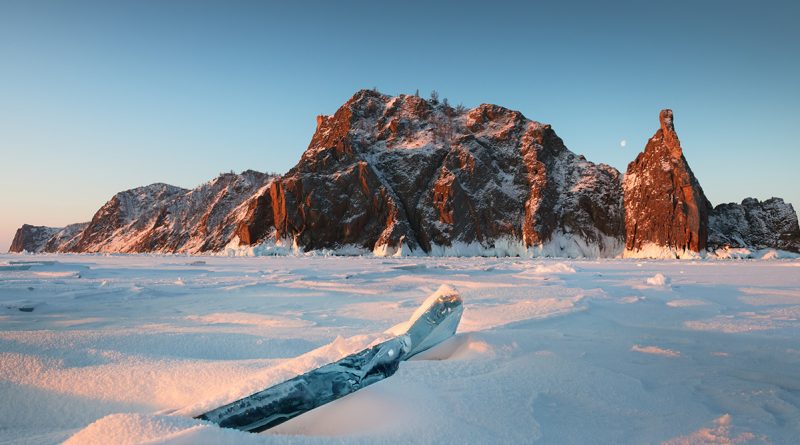Things To Know Before Visiting Lake Baikal
Lake Baikal is the largest and deepest freshwater lake in the world. Its seals are adorable and lovely to see. Moreover, Lake Baikal is now the place where Su Wu once herded sheep. In the past, it was known as the “North Sea” and belonged to the Han Dynasty. In winter, the snow wraps the mountains completely like a white velvety quilt. Meanwhile, in summer, the trees are green and the lake appears to be as blue as a mirror. No doubt, Lake Baikal is the pearl of Siberia, whereas Olkhon Island is the center of this pearl. It is a fantastic site to search for blue ice in the winter.
Drive away your doubts and set on a brave journey to Lake Baikal
We believe that the difficulty of Baikal should be between 7-8 if the difficulty index of free travel in Southeast Asia is 3 and 10 for South Africa. However, you need to do your homework before you leave as it is in fact a little more difficult to go to Lake Baikal than you think it is. So, in this article, we’ll try to clear all your doubts so you can have a lovely experience traveling to Lake Baikal.
Doubt 1: Is getting your visa troublesome?
Is it difficult to get a Russian visa? You can take help from Visa Express.
You might look for a visa agent and give them the necessary details. The cost of the visa is approximately $198. However, the simplest solution is to get a machine wine package. This will convert your personal visa into a group visa if you find the personal visa to be too difficult. Moreover, it is the same as a visa waiver.
Doubt 2: Just how cold is Lake Baikal?
#1. How cold is it?
Let’s start by examining how chilly Siberia is. This is where the fabled frigid air was born. Even the weather forecaster adds while pointing with a tiny stick to the “culprit”. and says, “It’s due to the cold air here.” Going south, we have only just begun to cool. Yes, the northern hemisphere’s frigid pole is here, and in Oymyakon, it can even get as low as minus 60 degrees.
However, the Baikal region is an exception. Some claim that Lake Baikal manages the climate of the lakeshore region in a natural two-way huge “air conditioner.” The lake surface is always frozen from January to May. It releases latent heat and lessens the winter’s harsh cold. On the other hand, the lake thaws in the summer, which absorbs a lot of heat and lowers the temperature. As a result, the winters on Lake Baikal are virtually as cold as those in China’s Great Northeast. The coldest day is not as cold as Mohe, but it is typically as cold as Harbin.

#2. Clothes
We dressed for temperatures of minus 20 to thirty degrees. However, since Lake Baikal’s warm winter is catching up with us this year, it is only 10 degrees below zero during the day and not cold. So, you can look for the northeast advice on popular travel websites to learn how thick you can wear it to withstand temperatures as low as 20 to 30 degrees. You’ll notice a choice of outfit options. Moreover, you can also complement it with warmth and odor according to your own conditions. Simply put, dress so that you resemble a loaf of bread.
What should you prepare before starting?
Here are some of the things you should prepare before starting your trip:
- Head: preferable to wearing caps, scarves, earplugs, or sunglasses that protect your ears.
- For the upper body, a down jacket or thick, airtight coat is recommended. For the middle layer, fleece or a regular sweater will do. Moreover, for the inner layer, it is strongly advised to wear a short-sleeved T-shirt as the room might be extremely warm and turtleneck sweaters will make you dizzy. Additionally, when locals eat in restaurants or shopping centers, they all wear short sleeves outside with a mink coat.
- Lower body: if you truly hate cold, just wear a pair of thick, fleece-lined leggings outside.
- The coziest and most comfortable footwear is UGG. Some claim that it can fall and is not slip-resistant. Besides, shoes are actually not that vital when walking in the snow as long as you have the necessary walking techniques down. UGG is quite cozy. There, people wear UGG barefoot, and even though they step into the snow and the insides of the shoes eventually become wet, they remain warm and dry. On the other hand, outdoor footwear is also an option, although it is preferable to wear some thicker socks. Your feet will continue to feel cold after a prolonged period of time spent outside. So, if you’re worrying that you’ll get wet, we don’t believe it is necessary for you to bring two pairs of shoes. Moreover, drying shoes is not an issue because the drying room is heated.
- Hand: Regular gloves work just fine. Also, Decathlon’s touch-screen gloves are enough for keeping you toasty.

How to keep your camera and phone warm?
Following are some useful tips:
- Battery issues in low-temperature environments cause the camera battery to quickly lose power and last just half as long as it should. So, try to avoid exposing the camera to low temperatures for an extended period of time. To make up for this, you can also decide to buy some equipment.
- Prepare a plastic bag to solve the fogging issue. Put the camera in the plastic bag outside first if you need to briefly enter the room from the outside. As a result, when you enter the room, water vapor will condense on the bag. However, you don’t need to use a plastic bag if you return to the hotel after a day of shooting; just let it dry naturally. If you want to wrap up both your outside and indoor photography… Then, rush in, start shooting indiscriminately, and try to finish it before the fog comes in…
- When the temperature drops below zero, Apple (iPhone) mobile phones are very simple to shut down. Perhaps your hand hasn’t yet felt chilly, and the screen on your Apple phone is blank. So, bring a power bank with you if you want to use your phone to take images of children’s shoes so they can last forever!




